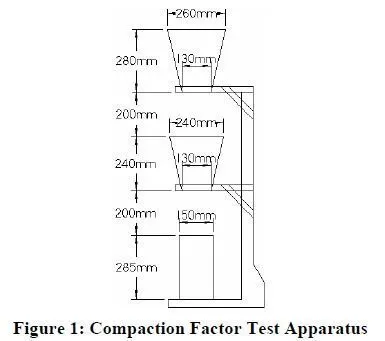The direct shear test used for soil (Powers 1968) can be performed with fresh concrete to assess the cohesive strength of a concrete mixture. The results of the test are given in terms of soil mechanics parameters, not in terms of yield stress and plastic viscosity.
The device, as described by Powers (1968), consists of a ring shaped container filled with compacted concrete. The lower half of the device is held in a fixed position while the upper half of the device is rotated slowly, resulting in a maximum shear stress on the plane between the two halves of the container. A vertical load can be applied to the concrete during the test. The test measures the angle of rotation of the upper container and the corresponding torque required to turn the container.
A typical plot of torque versus relative displacement shows an initial linear increase in torque up to a maximum value and then a decline followed by a gradual leveling off of the curve. The maximum stress is considered the static friction and the stress after the plot has leveled off is considered the sliding friction. The linear relationship between static friction and normal stress allows the calculation of the angle of internal friction.
Advantages:
The test essentially determines the yield stress of the concrete.
The test provides additional information, namely the angle of internal friction, not available from most conventional tests.
Disadvantages:
The results of the test are not described in terms of shear stress and shear rate. The use of the direct shear test predates the establishment of concrete as a Bingham material. The additional information provided by the test is not necessarily useful.
The test does not provide a measure of plastic viscosity.
The test is strictly a laboratory device.
